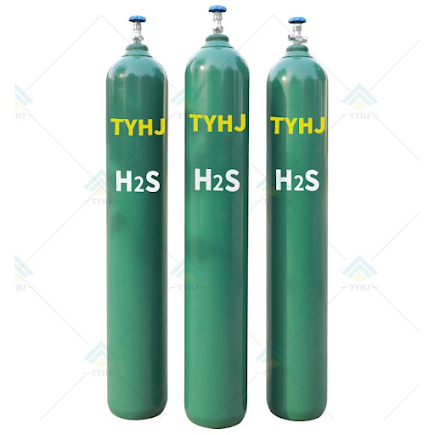Everything you need to know about hydrogen sulfide
What is hydrogen sulfide?
Hydrogen sulfide (H2S) is a colorless gas with the odor of rotten eggs. The most common sources of H2S emissions are oil and natural gas extraction and processing, and natural emissions from geothermal fields. It is also formed during bacterial decomposition of human and animal wastes, and is present in emissions from sewage treatment facilities and landfills. Industrial sources include petrochemical plants, coke oven plants, and kraft paper mills.
Why does TYHJ focus on hydrogen sulfide?
The odor of H2S is extremely strong and foul, and it can induce tearing of the eyes and symptoms related to overstimulation of the sense of smell, including headache, nausea, or vomiting. The odor of H2S is detectable at a very low level. On a population basis, the average odor detection threshold is about 0.03 to 0.05 ppm, although some individuals can detect H2S at lower concentrations. Additional health effects have only been reported with exposures greater than 50 ppm (eye irritation), considerably higher than the odor threshold based standard. Exposure to even higher levels of H2S (over 300 ppm) can induce serious adverse health effects, although these exposures are typically only encountered in occupational or industrial accident situations. H2S is regulated as a nuisance based on its odor detection level. If the standard were based on adverse health effects, it would be set at a much higher level.
Who is at the greatest risk from exposure to hydrogen sulfide?
There are insufficient data available to determine whether or not some groups are at greater risk than others. A few studies suggest that asthmatics may be at increased risk of exacerbation of their asthma symptoms.
How does hydrogen sulfide affect the environment?
H2S is a key participant in the global sulfur cycle. It is oxidized in the atmosphere to SO2, which can then be converted to sulfate through three different chemical pathways. H2S is somewhat soluble in water, resulting in formation of sulfhydric acid, which is corrosive to metals, and contributes to acidic deposition to soil and water. Additional information on the environmental effects of sulfur dioxide and sulfate can be found on the fact sheets for these two pollutants. H2S is not a climate change gas, although because H2S is converted in the atmosphere to sulfate, it contributes to the cooling influence provided by atmospheric sulfate.
Is hydrogen sulfide a problem indoors?
H2S is rarely a problem indoors. There are few indoor emission sources of H2S. Detection of H2S indoors is generally related to spoiling and decomposition of some foodstuffs. Caution: odorants, which have an odor similar to H2S, are added to natural gas as an aid to gas leak detection. If the odor of H2S is present in your home, the local gas company should be notified and asked to investigate whether or not there is a gas leak.
What is the Ambient Air Quality Standard for hydrogen sulfide?
The H2S standard was adopted for the purpose of odor control.
| 1-Hour Average | |
| National Ambient Air Quality Standard | None |
| California Ambient Air Quality Standard | 0.03 ppm |
The U.S. Environmental Protection Agency has not established a standard for H2S; however, the U. S. Occupational Safety and Health Administration has set an 8-hr average occupational standard of 20 ppm.
More about Specialty Gases, please contact us.

评论
发表评论